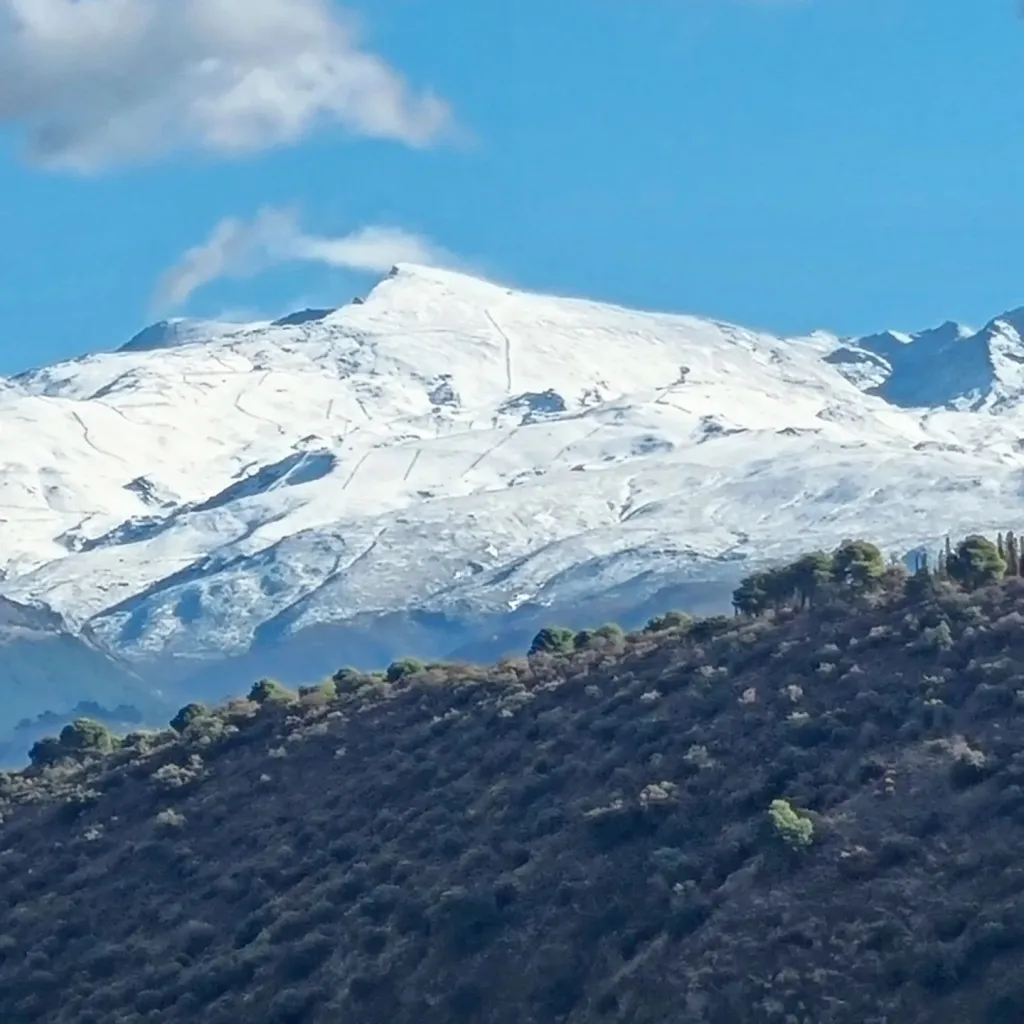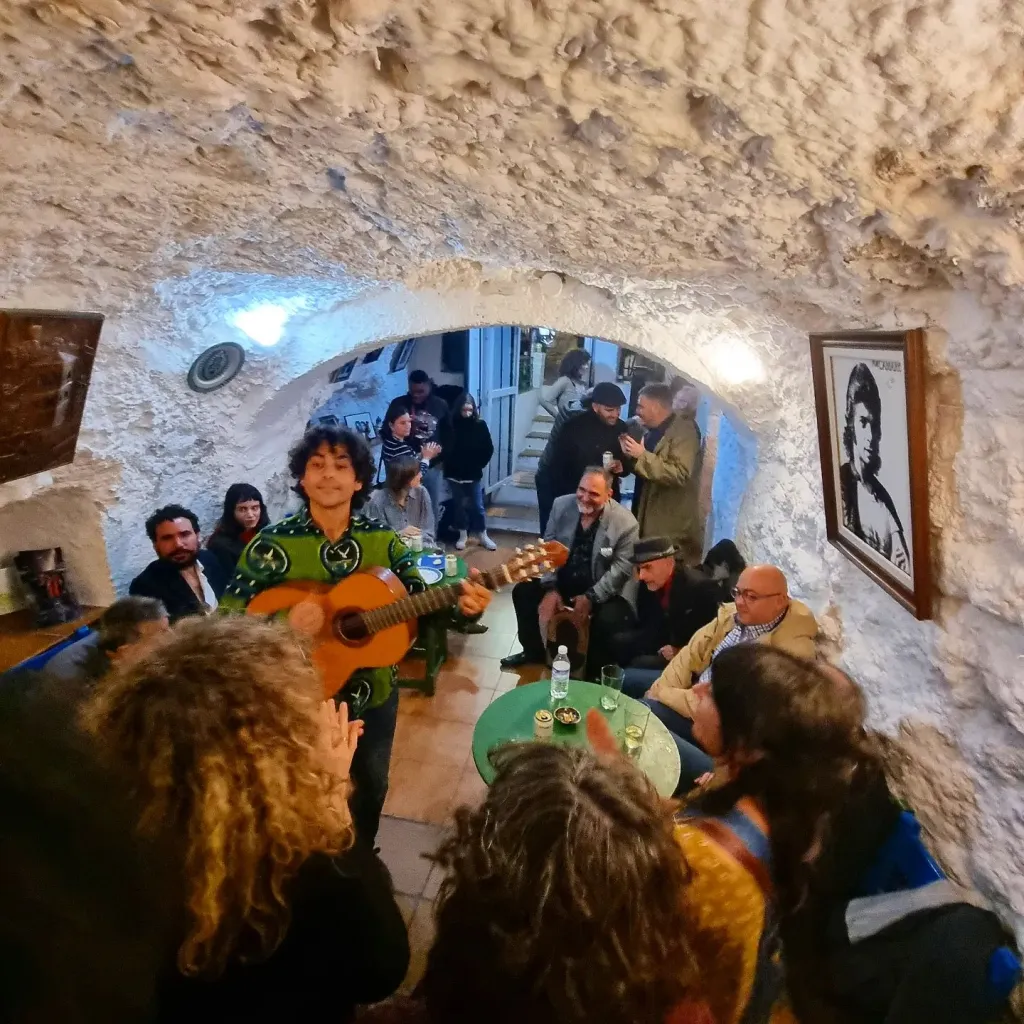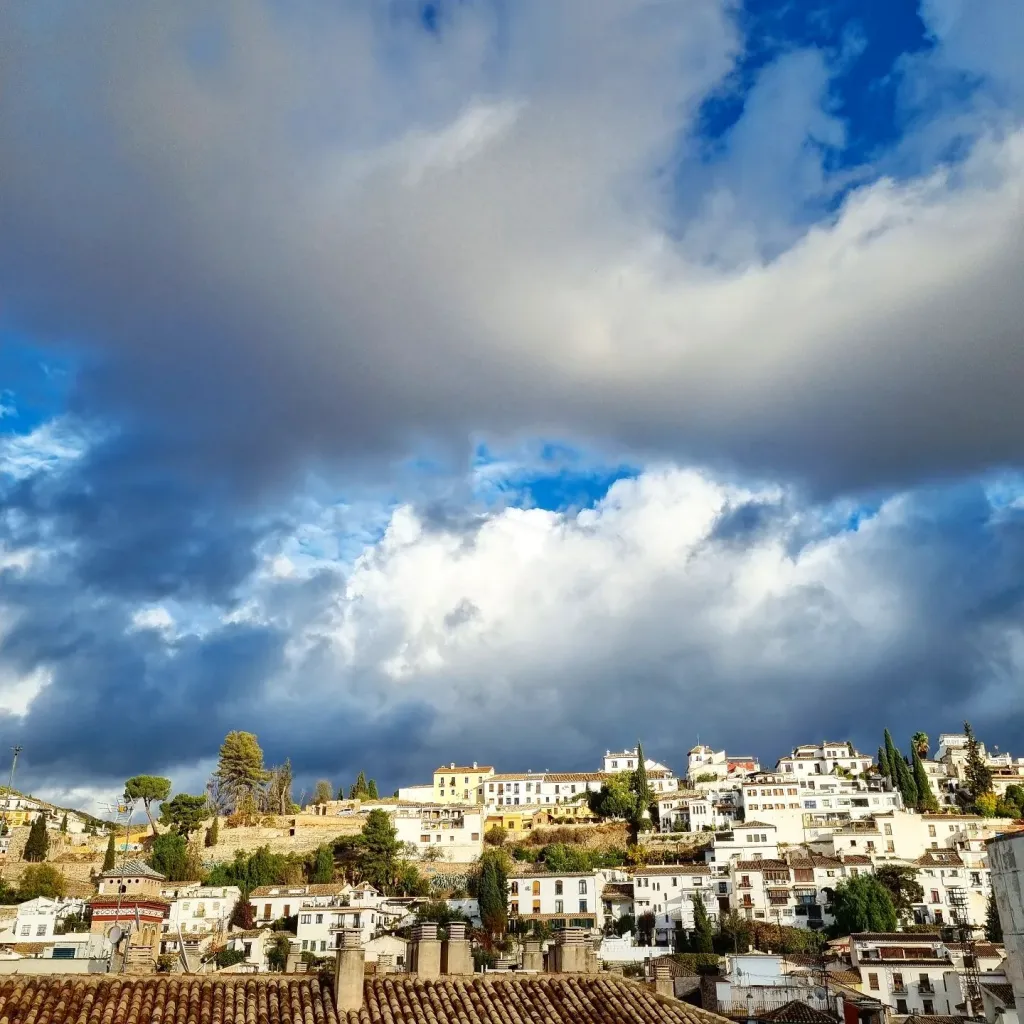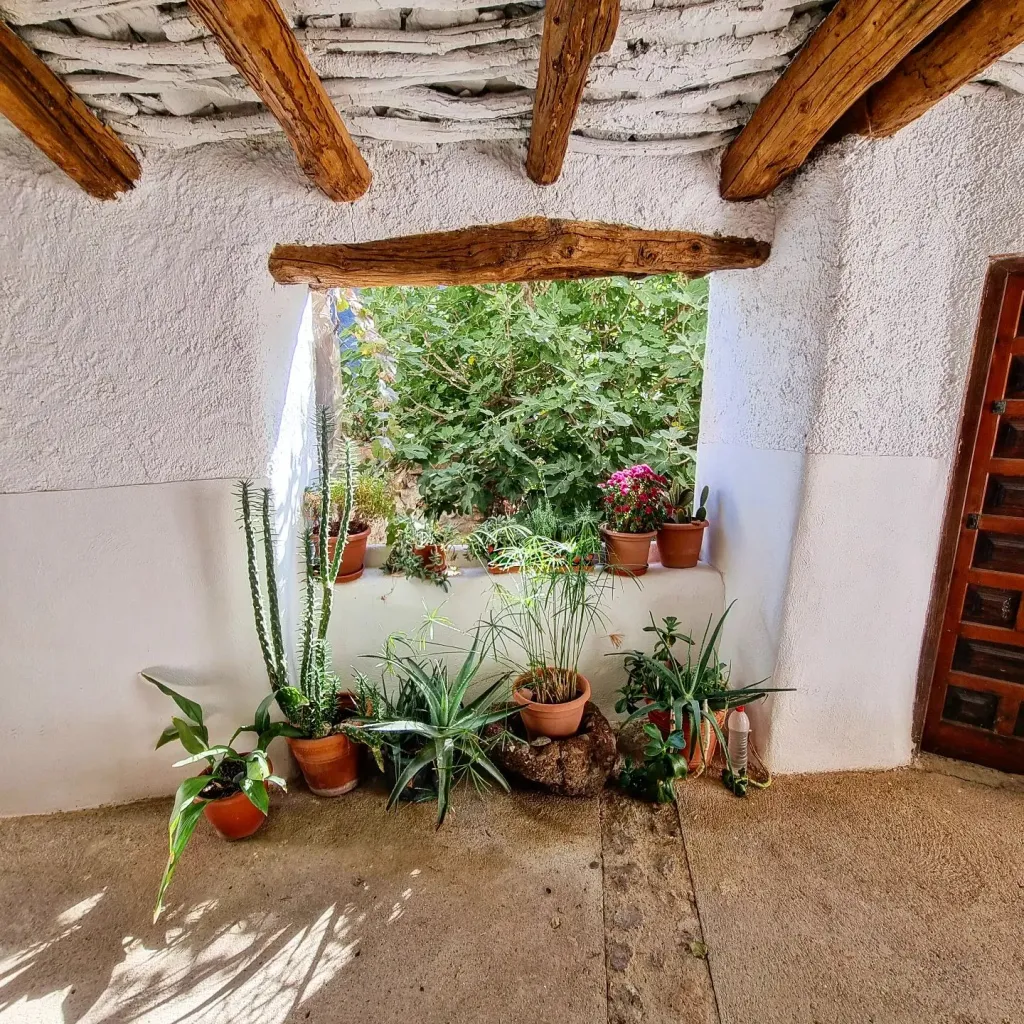[ 12:51 Tuesday 13 December 2022 – Gran Via de Colon, Granada, Andalucia ]
From where I sit on the roof terrace, the medieval heart of Granada unwinds beneath me like a labyrinth, the skyline punctuated by churches. To my left, the hulking mass of the cathedral, commenced 1518 on the site of the previous grand mosque, stands as a permanent marker of the Catholic monarchy’s final defeat of Spain’s Islamic civilisation after seven centuries.

In front of me, the sober dome and tower of Santos Justo y Pastor rise above the rooftops, built in 1575 as the convent church of the Hermandad de la Encarnación. To my right, the white-and-green tiled dome of San Juan de Dios strikes a jollier note, constructed from 1737 with a jaw-dropping baroque interior where every available surface is coated in gold.
Beyond the medieval centre and the suburbs stretches the wide fertile plain, Granada’s “Vega”. In the distance the horizon is ringed by low mountains. Finally, leaning over the parapet and looking to my left, the peaks of the high Sierra Nevada form a spectacular backdrop to the city, rising to three thousand metres and capped in snow.

For the last last three days the weather has been unsettled. As I write the Vega is dotted with patches of light and dark as clouds prowl across the sky. The mountains to my right are veiled beneath a grey curtain as a rainstorm passes over, heading towards the city. Sometime in the next half hour I’ll need to duck indoors and wait for the rain to pass.
We arrived in this flat at the start of November. The Andalucian winter is so mild and sunny I’ve been able to spend most days working out here on the terrace with my laptop, often wearing no more than a T shirt. This strikes quite a contrast with last winter in Pollença, where we were trapped inside with a blazing fire while gales and torrential rain battered the windows.

Granada is where Alex was born and went to university. I visited the city with him shortly after we met. However this is the first extended period we’ve spent here together. This is also the first of our Spanish homes located in a city centre rather than the country.
The city is delightful, the centre small enough that one can reach anywhere in thirty minutes by foot. Each week we buy fish from a stall in the central market, fruit and vegetables from our favourite grocer, bread from one of a handful of bakers. Occasionally we stop for tapas at one of the dozens of bars surrounding the house. We’ve been to art galleries, concerts and dance performances. Along the way I’ve met a variety of Alex’s childhood friends. My Spanish is just about at a point where I can converse with someone who speaks no English, albeit haltingly and with grievous errors.

The area of Granada I’m most drawn to is the Albayzin. This is the oldest part of the city, where the Romans established their settlement of Iliberis on a hill overlooking the plain in 44BC. More significantly, it’s where Zawa ben Ziri established Gharnata in 1009AD, the capital of the Zirid kingdom.
Over the subsequent 481 years Gharnata grew to be one of the greatest cities of the Islamic world, famed for its climate, fertility and artisanship. After the Catholic conquest of 1492 the geographical focus shifted to the foot of the hill where the medieval and modern city developed. As a result the Albayzin remains miraculously preserved, much as the Zirids would have recognised it.

A labyrinth of narrow streets and alleyways cling to the steep hillside, some no more than a metre wide, lined with houses of two or three storeys, often wrapped around a tranquil internal courtyard. Every so often a street opens onto an intimate plaza with a church at one end, which invariably turns out to have been a mosque previously. Underpinning the settlement is the virtuosic system of aqueducts and cisterns constructed by the Zirids to supply the city with water from springs ten kilometres to the north, much of it still in operation today.
Before arriving in Granada we spent a couple of weeks in Ferreirola, a tiny and silent village with 90 inhabitants, 1,000 metres high on the southern flank of the Sierra Nevada. This is one of fifty villages in the Alpujarra, a region settled by Berbers following the Islamic occupation of 711AD. They brought with them a distinctive and finely-tuned array of architectural, irrigation and agricultural practices from the Atlas mountains. The villages consist of white houses with stone walls, flat roofs made from branches supporting a layer of stones, with first floors extending over the narrow streets to provide shelter from the harsh winter weather.

The Alpujarra is as close to a Garden of Eden as anywhere on earth I’ve been. Springs bubble from the earth at every step, some producing sparkling water, others rich in iron. Forests of chestnut, walnut and oak cloak the mountainside. Orchards and gardens overflow with fruits and vegetables of every kind. Alex and I spent our days hiking and losing ourselves in the abundant nature.
In July I wrote about our first visit to Los Escullos in the Cabo de Gata Biosphere Reserve, on Andalucia’s southern coast. We both loved the area, so we decided to return and spend more time. For the month of October we rented a house in Las Hortichuelas Bajas, a tiny village at the foot of an ancient volcano, at the centre of the reserve.

In July the area felt remarkably free of tourists, but in October it was positively deserted. Over the course of the month we explored almost the entire coast from Cabo de Gata to Carboneras, with its seemingly infinite selection of wild coves and beaches, each with its own dramatic cliffs or rock outcrops.
During the month we experienced just one storm, complete with thunder, lightning and an hour of torrential rain. In such an arid landscape the rain felt like a miracle. The next day the air was filled with the rich perfumes of plants. Each afternoon we went to swim either on the stony beach at Las Negras or the broad sandy arc of Playazo de Rodalquilar, which became our favourite. Alex’s parents and my parents both came to stay while we were there.

Now, three months after our arrival in Andalucia, this chapter of our journey is almost at an end. The house is packed up and in a few hours Alex will drive me to the airport. After a week of meetings in London I’ll join my family for Christmas in Cornwall.
Andalucia is not at all what I expected. I imagined the blend of Islamic and Christian elements would be similar to Sicily, which I know well, however Andalucia is wildly different. The fusion of North African and European elements is woven much more deeply through every aspect of the landscape and culture, with the contributions of the Islamic civilisation more vividly present in the modern culture.
In truth we’ve barely scratched the surface of Andalucia in these months, yet already the contrasts are striking. The aridity of Cabo de Gata versus the lush fertility of the Alpujarra, the cosmopolitan vitality of Granada versus the silent stillness of Las Hortichuelas, the winter sunshine and blossoms of the Vega versus the snow-covered terrain of the Sierra Nevada.
This has been an intoxicating first immersion in Andalucia. I doubt it will be the last.
: c :